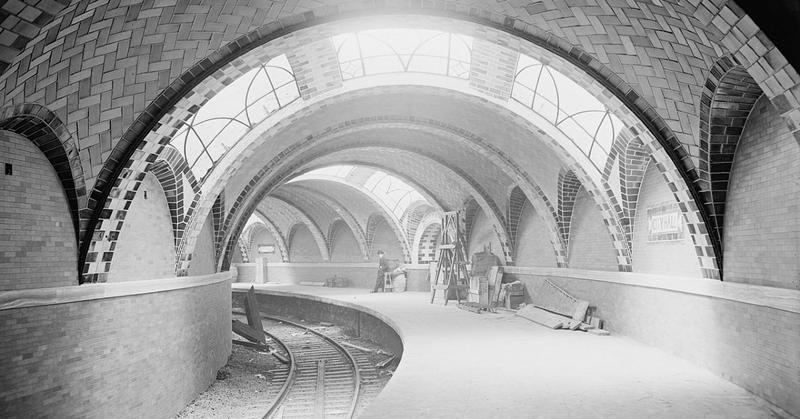How The New York City Subway Came To Be
By | April 12, 2021

On October 27, 1904, the New York City Subway opened its doors to allow citizens of the Big Apple to make their way across the city that never sleeps at any time, day or night. The New York City subway system may not be the oldest in the world or even in the United States (those titles belong to London and Boston, respectively), but since its inception, it's grown to be the largest subway system in the country.
The New York City Subway
As New York City expanded in the late 19th century, Mayor Abram Hewitt (the "father of the subway") recognized that people who lived outside Manhattan needed a new method of transportation into the city center that wouldn't clog the streets. He was only in office for one year, between 1887 and 1888, but he proposed an underground rapid transit system, resulting in the 1891 New York Rapid Transit Act, which guaranteed any city in the state with more than 1 million inhabitants the cash and resources to build rapid transit.
Once the money was available from the state, entrepreneurs started moving quickly. John B. McDonald won a $35 million contract for the Rapid Transit Construction Company, which would later be known as the Interborough Rapid Transit Company, giving them a 50-year operating lease. Although some of them feared tunnel collapses and poor air quality, the city went all-in on sending its inhabitants underground.

Building The New York City Subway System
Today, there are numerous means of building an underground subway system, such as giant tunnel-boring machines, conveyor systems to remove dirt, and concrete tunnel liners that speed up production without disrupting life above ground. That wasn't the case in the 1890s, when the I.R.T.C. used open excavation to dig beneath the city. Moving around ground water, rock formations, and the canal from which Canal Street gets its name, crews drilled at night and then blasted the rocks with dynamite early in the morning, a decision that damaged multiple homes during the early stages of the subway's construction. After the A.M. detonations, midday crews removed debris in mule carts, and the whole thing started all over again.
Of course, a single subway line couldn't serve a city as far-flung as New York. While the I.R.T.C. was in charge of the subway line that stretches from City Hall to Times Square and the lines that travel from 145th Street and Broadway, the Brooklyn Rapid Transit Company (today known as the Brooklyn-Manhattan Transit Corporation) had control of the elevated lines in Brooklyn dating back to 1876. This shouldn't have been a big deal, but both companies wanted to be the head honcho, so B.R.T.C built their trains longer and wider so they couldn't run on the I.R.T.C. lines. Meanwhile, the city appointed the Independent Rapid Transit Railroad to run the Eighth Avenue line in 1932, making it the first subway service actually run by the city.
Hopping between the different lines was a headache both for riders and the city, so by 1940, the city subsumed the I.R.T.C. and B.R.T.C. and began a unification project that closed many of Brooklyn's elevated lines while creating easier transfer points. On June 15, 1953, the New York State Legislator created a governing body to deal specifically with public transit, initially called the New York City Transit Authority.

The First New York City Subway
Anyone riding the subway on its inaugural run on October 27, 1904 was treated to a seriously special day. The opening of one of the most important and now longest mass transit routes was attended by more than 150,000 people, but the first train was filled with contractors, investors, and I.R.T.C. employees. The train was put into motion at 2:35 P.M. by Mayor George McClellan and remained closed to the public until 7:00 P.M. that night, when riders were allowed to trade one nickel for the 9.1-mile ride from Lower Manhattan to 145th Street and Broadway in Harlem.
By 1910, the trains were so popular that cars were constructed with an additional door in the center to accommodate riders. Between 1915 and 1937, more than eight different car styles were created in an attempt find the perfect version of a subway train. It wasn't until 1950 that subway cars actually had air conditioning, but even then, the ride wasn't all that pleasant. Many passengers had to deal with water from the air conditioner splashing them or just damp cars in general. Thankfully, modern advances have made the New York City Subway more comfortable than ever, though most of its riders would still probably prefer teleportation.

